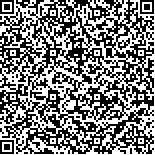| 引用本文: | 窦颖辉,于晨阳,杨飞飞,李连连,廖永红,倪晓燕.人干扰素α2b溶液雾化吸入性能的稳定性研究 [J].中国现代应用药学,2024,41(18):9-14. |
| douyinghui,yuchenyang,yangfeifei,lilianlian,liaoyonghong,nixiaoyan.Study on stability of inhalability and bioactivity of nebulized human interferon α2b solutions[J].Chin J Mod Appl Pharm(中国现代应用药学),2024,41(18):9-14. |
|
| |
|
|
| 本文已被:浏览 499次 下载 364次 |

码上扫一扫! |
|
|
| 人干扰素α2b溶液雾化吸入性能的稳定性研究 |
|
窦颖辉1, 于晨阳2,3,4, 杨飞飞2,3,4, 李连连1, 廖永红2,3,4, 倪晓燕1
|
|
1.安徽安科生物工程(集团)股份有限公司;2.中国医学科学院&3.amp;4.北京协和医学院药用植物研究所
|
|
| 摘要: |
| 目的 研究人干扰素α2b(hIFN α2b)溶液经加速和长期稳定性试验条件下放置后,其雾化吸入性能及生物活性的变化。评估hIFN α2b溶液在效期内以雾化吸入方式给药治疗儿童呼吸道合胞病毒引起的下呼吸道感染的适宜性。方法 应用激光衍射仪测定雾化液滴实时粒度大小及分布;采用新一代药用撞击器(NGI)测定hIFN α2b雾化后的空气动力学性质;应用呼吸模拟器(BRS)测定递送速率和递送总量;采用细胞病变抑制法测定雾化气溶胶中hIFN α2b的生物学活性。结果 hIFN α2b溶液雾化后液滴的Dx(50)为3.57 μm;空气动力学质量中值粒径(MMAD)为3.31 μm,微细粒子分数(FPF)为76.9%,几何标准偏差(GSD)为1.94;儿童呼吸模式下,递送速率和递送总量分别为0.68 × 105 IU/min 和5.31 × 105 IU。加速稳定性试验条件下储存6个月及长期稳定性试验条件下储存24个月后,样品雾化液滴大小及分布、空气动力学参数、递送性能及雾化后生物活性与初始相比,RSD均小于6%。结论 hIFN α2b溶液雾化液滴大小及空气动力学性质适宜将药物递送下呼吸道;在加速稳定性试验条件下储存6个月和长期稳定性试验条件下储存24个月后,吸入性能及雾化后的生物学活性指标无明显变化。 |
| 关键词: 人干扰素α2b 雾化吸入 可吸入性能稳定性 生物学活性 |
| DOI: |
| 分类号: |
| 基金项目: |
|
| Study on stability of inhalability and bioactivity of nebulized human interferon α2b solutions |
|
douyinghui1, yuchenyang2,3,4, yangfeifei2,3,4, lilianlian1, liaoyonghong2,3,4, nixiaoyan1
|
|
1.Anhui Anke Biotechnology (Group) Co., Ltd;2.Institute of Medicinal Plant Development (IMPLAD), Chinese Academy of Medical Sciences &3.amp;4.Peking Union Medical College
|
| Abstract: |
| ABSTRACT: OBJECTIVE This study aims to investigate the change of the human interferon α2b (hIFN α2b) solution in inhalability and bioactivity following storage under accelerated and long-term stability testing conditions. The investigation evaluated the suitability for pulmonary delivery of hIFN α2b through nebulization, specifically for treating lower respiratory tract infections caused by respiratory syncytial virus in children within the product’s shelf life. METHODS The real-time droplet size and distribution of the nebulized hIFN α2b were evaluated using a laser diffraction (Spraytec), while the aerodynamic particle size distribution (APSD) was analyzed with the next generation pharmaceutical impactor (NGI). The respirable drug delivery rate and total delivered dose were determined under a breathing simulator (BRS). Additionally, the bioactivity of hIFN α2b in aerosol was measured with a cytopathic-effect inhibition assay. RESULTS The droplet size distribution analysis revealed a Dx(50) of 3.57 μm when utilizing a jet nebulizer. Aerodynamically, the aerosol exhibited a fine particle fraction (FPF) of 76.9% and a mass median aerodynamic diameter (MMAD) of 3.31 μm, with a geometric standard deviation (GSD) of 1.94. The total delivered dose and delivery rate under a child breathing pattern were 5.31 × 105 IU and 0.68 × 105 IU/min, respectively. Results showed that no significant change was observed in the droplet size distribution, aerodynamic parameters, delivery efficiency and the bioactivity of aerosol after storage under accelerated stability testing conditions for 6 months and long-term stability testing conditions for 24 months. All relative standard deviation (RSD) values were below 6%. CONCLUSIONS The droplet size of hIFN α2b aerosol was suitable for delivering to the lower respiratory tract after nebulization with a jet nebulizer. Furthermore, no significant change was found in the inhalability or bioactivity of the nebulized hIFN α2b under accelerated stability testing conditions for 6 months and long-term stability testing conditions for 24 months. |
| Key words: human interferon α2b nebulization inhalable stability bioactivity |
|
|
|
|
